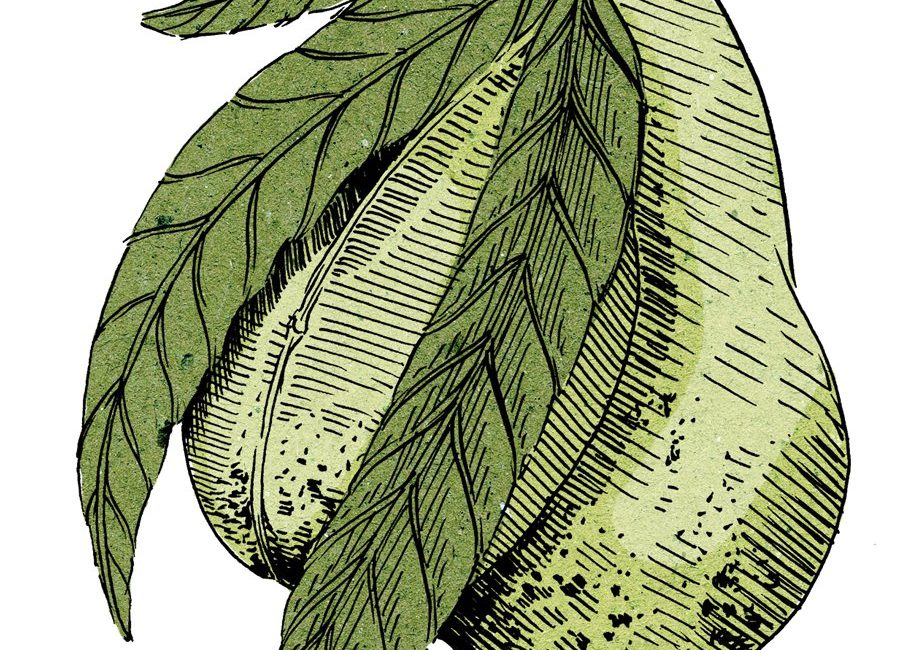
How to Forage Like a Pro
Greg Monzel, who studied at the Northeast School of Botanical Medicine, and pro forager Summer Cooper helped us ID some of the “nature-to-table” ingredients local restaurants source from the great outdoors.
Pawpaw
The native tree fruit has flavor notes of mango and banana—and is, in fact, the northernmost member of a tree family that spreads south to the tropics.
Harvest time: Late July into August.
Outdoors: Mature forests, rural and urban.
Indoors: This spring, Upland Brewing Co. debuted a Pawpaw Sour Ale aged in oak barrels.
Chanterelle
Hoosier mushroom-hunters practically trip over one another in mid-spring looking for morels. Foragers find less traffic in the summertime while searching for this golden, aromatic fungus.
Harvest time: July into August.
Outdoors: Woodlands.
Indoors: Pizzology serves them on pies in season.
Mulberry
These fragile, juicy tree berries don’t keep or travel well but make sweet jams and dessert-fillings.
Harvest time: Early to mid-June.
Outdoors: Parks, mature neighborhoods, fencerows, forests.
Indoors: Napolese sometimes adds mulberries to cobblers in season.

Rose Hip
The tart, berry-like fruits of wild roses can be plucked and used as a spice, either dried or fresh.
Harvest time: November (hips are most flavorful after the first frost).
Outdoors: Sunny meadows, fencerows, edge of woods.
Indoors: The Thirsty Scholar uses rosehips in its “333” herbal tea blend.

Ramp
A native member of the onion family, this chef-favorite can be used like a leek. (But don’t over-reap; leave some to propagate.).
Harvest time: Mid-April to late May.
Outdoors: Woodlands with rich soil.
Indoors: Bluebeard has featured a king salmon dish with pickled ramps.

Persimmon
Historically, the sweet-treat fruit has been one of Indiana’s best-known wild edibles.
Harvest time: September through December.
Outdoors: Forests and woodlands.
Indoors: Persimmon pudding often shows up on fall dessert menus, but the mecca is the town of Mitchell’s Persimmon Festival (September 19–26).

Amaranth
The leaves of this nutritious, mineral-rich plant resemble spinach, and the seeds can be used similarly to quinoa.
Harvest time: Mid-June into August (greens); August into September (seeds).
Outdoors: Anywhere weeds grow.
Indoors: At a Chef’s Night Off event this past winter, chef Jonathan Brooks of Milktooth prepared amaranth as part of a tuna dish.

Black Walnut
The nuts of this native hardwood resemble the store-bought variety often grown in California and Florida—but taste better, insist the initiated.
Harvest time: Late September and October.
Outdoors: Forests, parks, mature neighborhoods.
Indoors: Chef Brandon Canfield of The Loft serves a black walnut–and–parsley pesto with roasted chicken.

WANT TO FORAGE?
Get permission before entering private property, and avoid areas with polluted soil or clearings likely sprayed with herbicides. Rules on public lands (like state parks and forests) vary, so inquire with the proper authorities.
This article appeared in the August 2015 issue.






